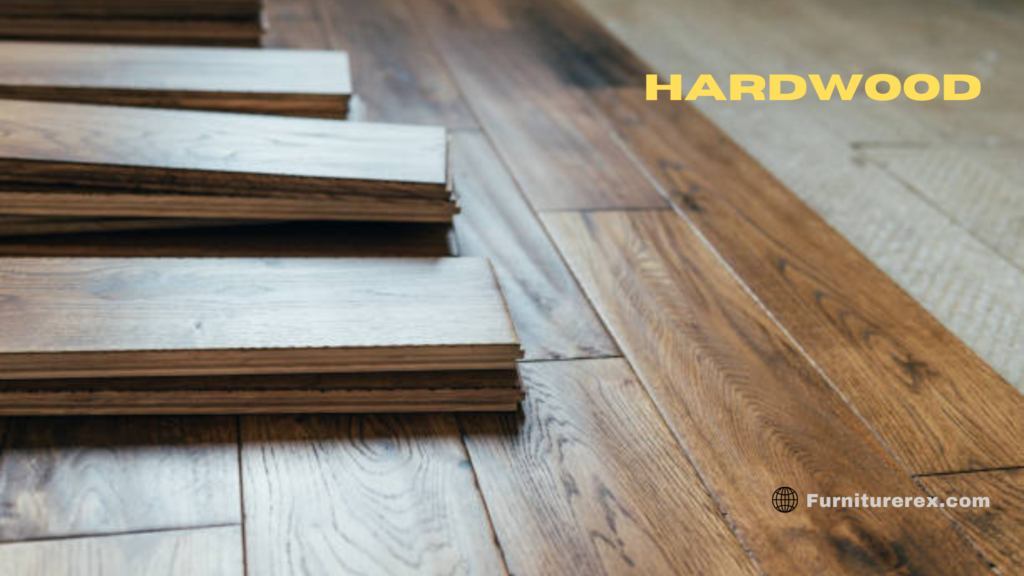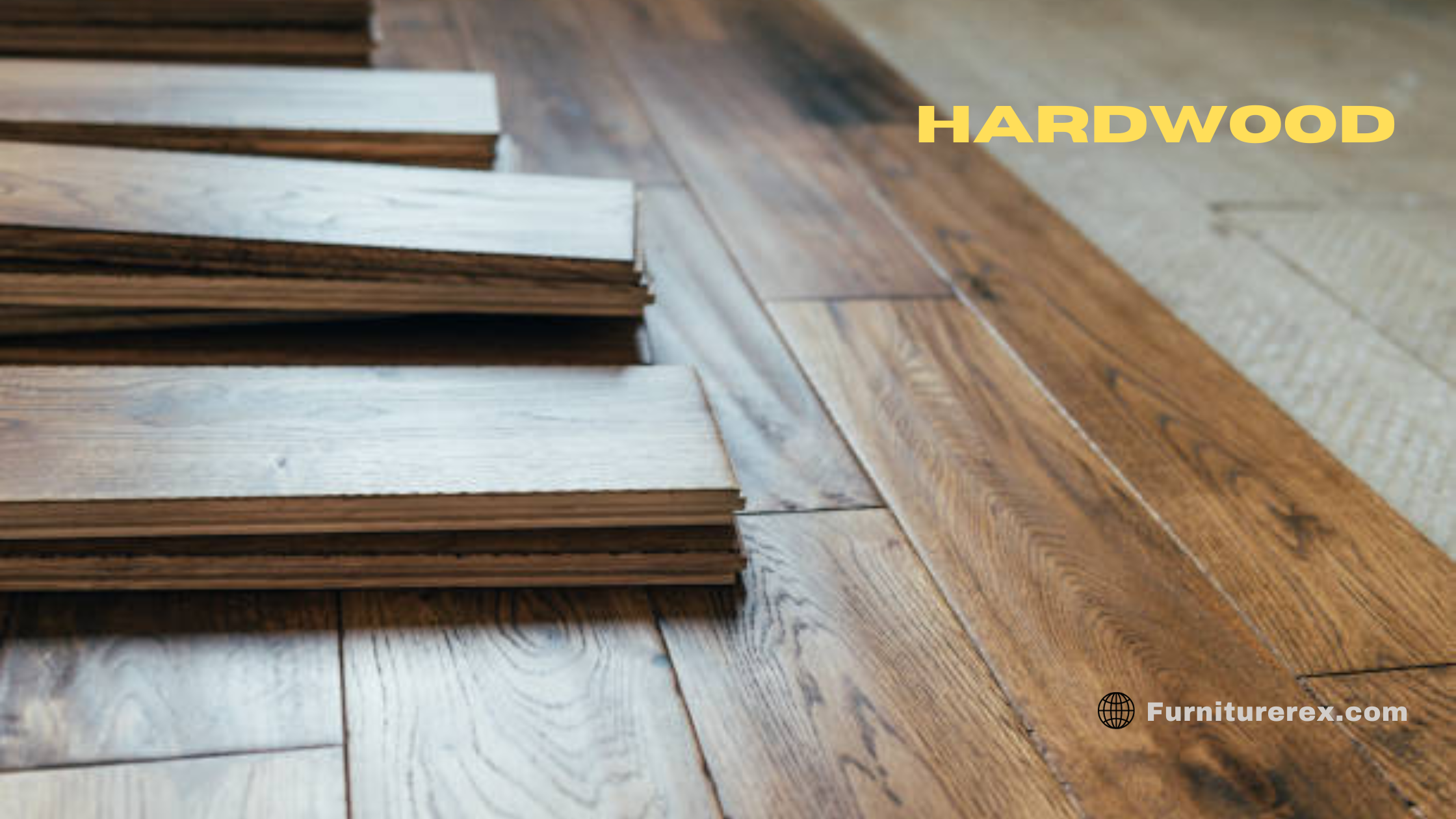Hardwood has long been revered for its timeless beauty, durability, and versatility, making it a popular choice for flooring, furniture, and decorative accents. In this comprehensive guide, we will delve into the myriad benefits of hardwood and explore why it continues to be a top choice for homeowners and interior designers alike. From its natural warmth and character to its eco-friendly qualities and long-term value, hardwood offers an array of advantages that go beyond just aesthetics.

What are Hardwood ?
Hardwood refers to wood that comes from deciduous trees, which are trees that shed their leaves annually. These trees are also known as angiosperms, and they produce seeds enclosed in fruits or nuts. Hardwoods are known for their dense and durable characteristics, making them valuable for various applications, especially in the construction and manufacturing industries.
Common examples of hardwoods include oak, maple, cherry, walnut, mahogany, and teak. These woods are often used for furniture, flooring, cabinetry, and other high-quality wood products due to their strength, resistance to wear, and attractive grain patterns. Hardwoods are generally more expensive than softwoods (wood from coniferous trees), but their durability and aesthetic qualities often make them worth the investment in certain applications.
What is made from hardwood?
Hardwood, the versatile and elegant material, finds itself used in a myriad of applications due to its durability, beauty, and strength. From flooring that exudes timeless charm to stunning furniture that adds a touch of sophistication to any space, hardwood is truly a jack-of-all-trades. It is also widely utilized in the construction of high-quality cabinets and countertops due to its ability to withstand wear and tear while providing an unmatched aesthetic appeal.

Beyond these conventional uses, hardwood also serves as the preferred material for crafting exquisite musical instruments such as pianos and guitars. Its resonance properties contribute to the rich sound quality produced by these instruments, making them cherished possessions for artists and enthusiasts alike. Moreover, with its natural resistance to warping and decay, hardwood has found a niche in exterior applications like decking and outdoor furniture, offering durability against the elements while maintaining its natural allure. In essence, the benefits of hardwood extend far beyond mere aesthetics; they encompass longevity, versatility, and unparalleled quality across various industries.
What are the Benefits of Hardwood ?
Hardwood offers several benefits, making it a popular choice for various applications in construction, furniture, and other industries. Here are some of the key benefits of hardwood:
Durability: Hardwood is known for its durability and strength. It can withstand wear and tear over time, making it suitable for high-traffic areas such as flooring and furniture.
Longevity: Hardwood products, when properly maintained, can have a long lifespan. This longevity adds to the overall value of hardwood investments.
Aesthetic Appeal: Hardwoods often have beautiful and distinctive grain patterns that contribute to their aesthetic appeal. They are used in fine furniture and cabinetry, providing a natural and timeless look.
Versatility: Hardwood is versatile and can be used for a wide range of applications, including flooring, furniture, decking, cabinetry, and more. Its versatility makes it a preferred choice for various design styles.
Resale Value: Homes with hardwood flooring or other hardwood features often have a higher resale value. Hardwood is considered a premium material that adds to the overall attractiveness of a property.
Ease of Maintenance: Hardwood floors and surfaces are generally easy to clean and maintain. Regular cleaning and occasional refinishing can keep them looking new for many years.
Environmental Sustainability: Some hardwoods, when sourced responsibly, can be considered environmentally sustainable. Look for certifications like FSC (Forest Stewardship Council) to ensure that the hardwood has been harvested in an environmentally friendly and socially responsible manner.
Increased Property Value: Installing hardwood floors or incorporating hardwood features in a home can enhance its overall value. Many homebuyers appreciate the elegance and durability of hardwood.
Warmth and Comfort: Hardwood provides a natural warmth to spaces and is often more comfortable to walk on than harder surfaces like tile. It can also be used with underfloor heating systems.
Adaptability to Styles: Hardwood complements a wide range of interior design styles, from traditional to modern. Its natural beauty can enhance the aesthetic of any space.
While hardwood has numerous advantages, it’s important to consider factors such as cost, maintenance requirements, and environmental impact when choosing hardwood for a particular application. Additionally, responsible sourcing practices are crucial to ensure the sustainability of hardwood resources.
What defines a hardwood?
Several characteristics define hardwoods:
Deciduous Trees: Hardwoods come from deciduous trees, which are characterized by their ability to shed their leaves annually. These trees are also known as angiosperms and belong to the botanical group that produces seeds enclosed in fruits or nuts.
Density: Hardwoods are typically denser than softwoods. The density contributes to their durability, strength, and resistance to wear.
Slow Growth: Hardwood trees generally grow more slowly than softwood trees. The slow growth contributes to the wood’s density and often results in a finer grain pattern.
Cellular Structure: Hardwoods have a more complex cellular structure compared to softwoods. They often have vessels or pores that are visible under a microscope, and these characteristics contribute to the unique grain patterns seen in hardwoods.
Types of Hardwoods: Examples of hardwood species include oak, maple, cherry, walnut, mahogany, teak, and more. Each hardwood species has its own unique characteristics, color, and grain pattern.
Applications: Hardwoods are commonly used in applications where strength, durability, and aesthetic appeal are important. They are frequently employed in furniture, flooring, cabinetry, musical instruments, and other high-quality wood products.
It’s important to note that the term “hardwood” doesn’t necessarily indicate the actual hardness of the wood. For example, balsa wood is a hardwood, but it is relatively soft compared to some softwoods. The classification is more based on the botanical characteristics of the trees rather than the physical hardness of the wood.
What is an example of a hard wood?
One prime example of a hardwood is oak. This sturdy and durable wood is renowned for its strength and resistance to wear, making it an excellent choice for various applications. From furniture and flooring to cabinetry and even musical instruments, oak’s versatility makes it a popular option for many woodworking projects.
The benefits of using oak as a hardwood material are numerous. Its natural beauty creates an inviting warmth in any space, while its longevity ensures that investment in oak products will stand the test of time. In addition, the ability to be easily stained or treated allows for customization, catering to individual aesthetic preferences while maintaining the inherent durability of this remarkable hardwood.
Another notable example of a hardwood is cherry. Renowned for its rich reddish-brown color and smooth grain pattern, cherry wood possesses an unmistakable elegance that distinguishes it from other materials. Its ability to age gracefully over time further enhances its appeal, making it a timeless addition to any environment longing for refinement and sophistication.
Conclusion :
In conclusion, hardwood is a versatile and durable material that offers numerous benefits across various applications. Its inherent strength, longevity, and aesthetic appeal make it a popular choice for flooring, furniture, cabinetry, and more. Beyond its functional qualities, hardwood adds value to homes and spaces, contributing to a timeless and elegant atmosphere. However, it’s essential to weigh factors such as cost, maintenance, and responsible sourcing practices when considering hardwood for specific projects. With proper care and consideration, hardwood stands out as a premium and sustainable choice for those seeking both functionality and beauty in their living or working environments.
Pros and Cons

Pros of Hardwood:
Durability: Hardwood is known for its durability and ability to withstand wear and tear over time.
Aesthetic Appeal: Hardwoods often have beautiful and unique grain patterns, adding a timeless and natural aesthetic to spaces.
Longevity: When properly maintained, hardwood can have a long lifespan, contributing to the overall value of the investment.
Versatility: Hardwood is a versatile material used in various applications such as flooring, furniture, cabinetry, and more.
Property Value: Homes with hardwood features tend to have a higher resale value due to the premium nature of hardwood.
Ease of Maintenance: Hardwood floors and surfaces are generally easy to clean, and occasional refinishing can keep them looking new.
Cons of Hardwood:
Cost: Hardwood can be more expensive than alternative flooring materials, which can be a significant factor for budget-conscious projects.
Susceptibility to Moisture: Hardwood is sensitive to moisture and can warp or become damaged if exposed to excessive humidity or water.
Scratches and Dents: While hardwood is durable, it is not impervious to scratches and dents, especially in high-traffic areas.
Installation Challenges: Installing hardwood can be more labor-intensive compared to other flooring options, potentially increasing installation costs.
Environmental Concerns: The sourcing of hardwood can raise environmental concerns if not done sustainably. Clear-cutting and deforestation can contribute to habitat loss and other ecological issues.
Maintenance Requirements: While generally easy to maintain, hardwood may require periodic refinishing to address scratches or wear, which can be a more involved process.
Related Tags : Wood Flooring, Timber, Natural Materials, Hardwood Species, Sustainable Wood, Interior Design, Home Improvement, Woodworking, Flooring Options, Fine Furniture, Cabinetry, Wood Finishes, Home Décor, Luxury Homes, Renovation, Eco-friendly Materials, Solid Wood, Decorative Wood, Premium Materials, Sustainable Forestry,



I was recommended this website by my cousin. I am not sure whether this post is written by him as nobody else know such detailed about my difficulty. You are wonderful! Thanks!